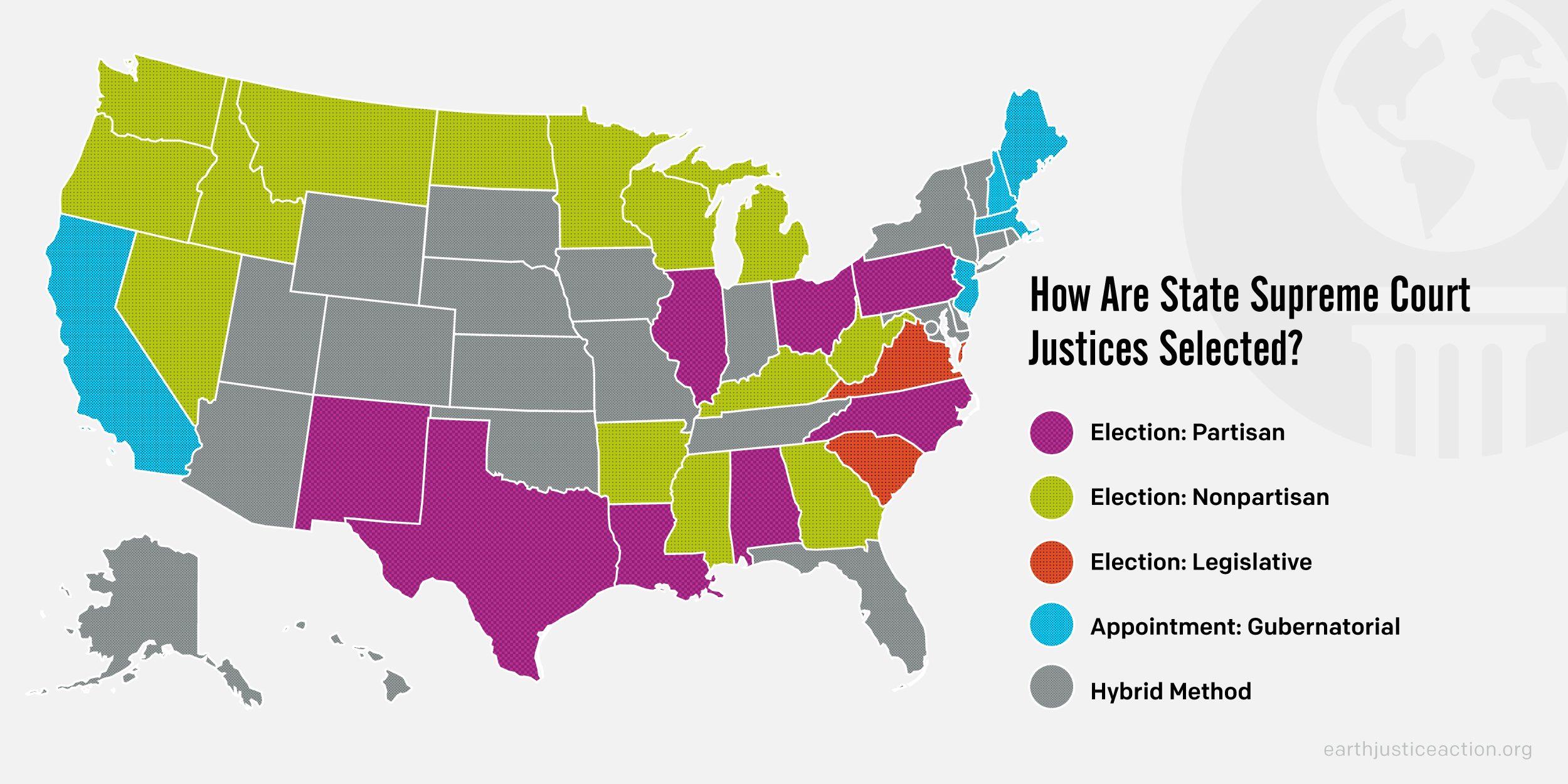
How Are State Supreme Court Justices Selected?
State supreme courts, often-overlooked as they may be, are often as important as the U.S. Supreme Court – at least for residents of their respective states. However, the processes for putting justices on these benches are anything but uniform.
Knowing how your state supreme court justices make their way to the bench is just as important as knowing what they do. If you don’t, you risk missing out on having your voice heard in your next gubernatorial, state legislature, or state supreme court election.
The Process
There are five main ways state supreme court justices are selected:
1. Partisan election*: Candidates run for the office of state supreme court justice with a party label attached.
2. Nonpartisan election*: Candidates run for the office of state supreme court justice without a party label attached.
3. Gubernatorial appointments: The governor directly appoints justices.
4. State legislature election: State legislators vote for justices.
5. Hybrid method: In most cases, an independent nominating commission provides a list of suggested candidates for the governor to choose from – this can either be binding or non-binding depending on the state.
* In some places, justices are elected to fill an empty seat, while in others, the governor initially appoints justices, and voters then get to choose whether to retain them after a few years. This is called a retention election, in which the candidate doesn’t face an opponent, but rather the voters' opinion on whether to retain or remove them.
Pennsylvania has a critical retention election coming up this November that’s sure to draw national attention. Three of the seven state supreme court justices will be on the ballot.
The Specifics: State by State

| Alabama | Arkansas | California* | South Carolina | Alaska |
| Illinois | Georgia | Maine | Virginia | Arizona |
| Louisiana | Idaho | Massachusetts | Colorado | |
| New Mexico* | Kentucky | New Hampshire* | Connecticut | |
| North Carolina | Michigan* | New Jersey | Delaware | |
| Ohio | Minnesota | District of Columbia* | ||
| Pennsylvania | Mississippi | Florida | ||
| Texas | Montana | Hawaiʻi | ||
| Nevada | Indiana | |||
| North Dakota | Iowa | |||
| Oregon | Kansas | |||
| Washington | Maryland | |||
| West Virginia | Missouri | |||
| Wisconsin | Nebraska | |||
| New York | ||||
| Oklahoma | ||||
| Rhode Island | ||||
| South Dakota | ||||
| Tennessee | ||||
| Utah | ||||
| Vermont | ||||
| Wyoming |
*States with unique processes:
Sources: Ballotpedia, Democracy Docket, State Court Report

